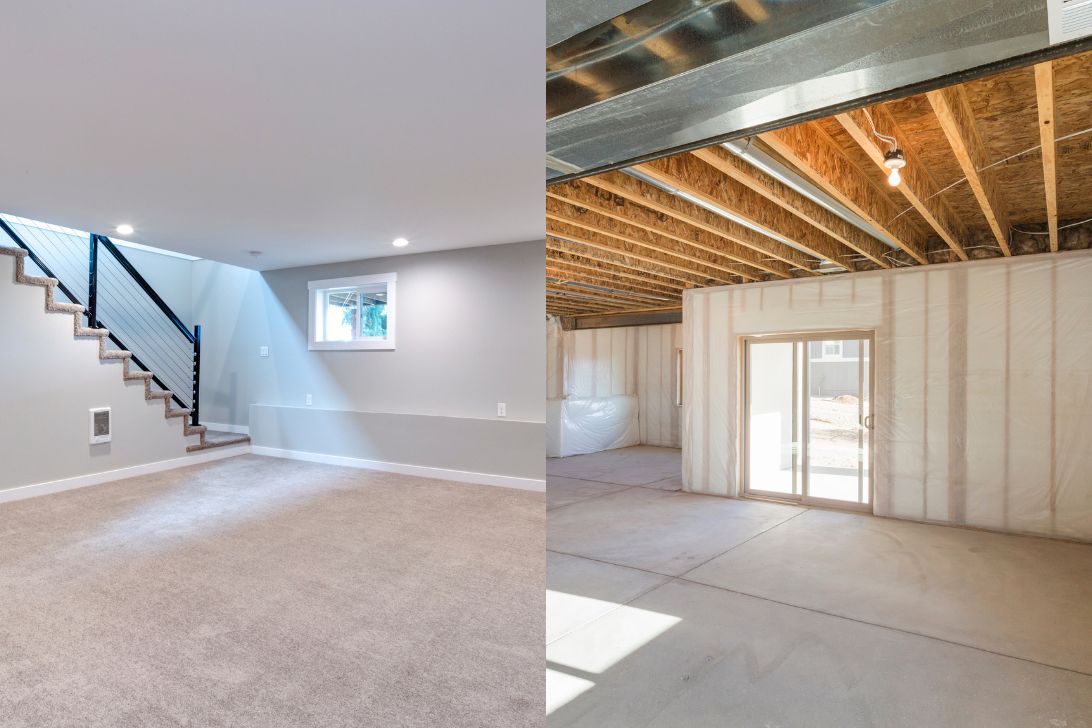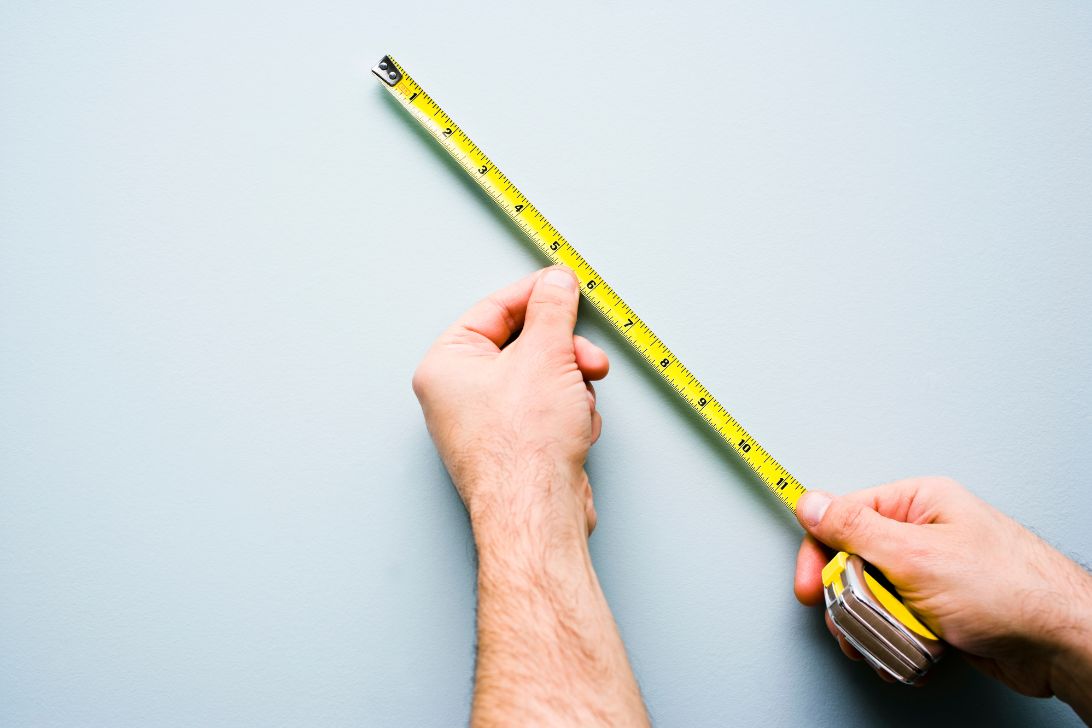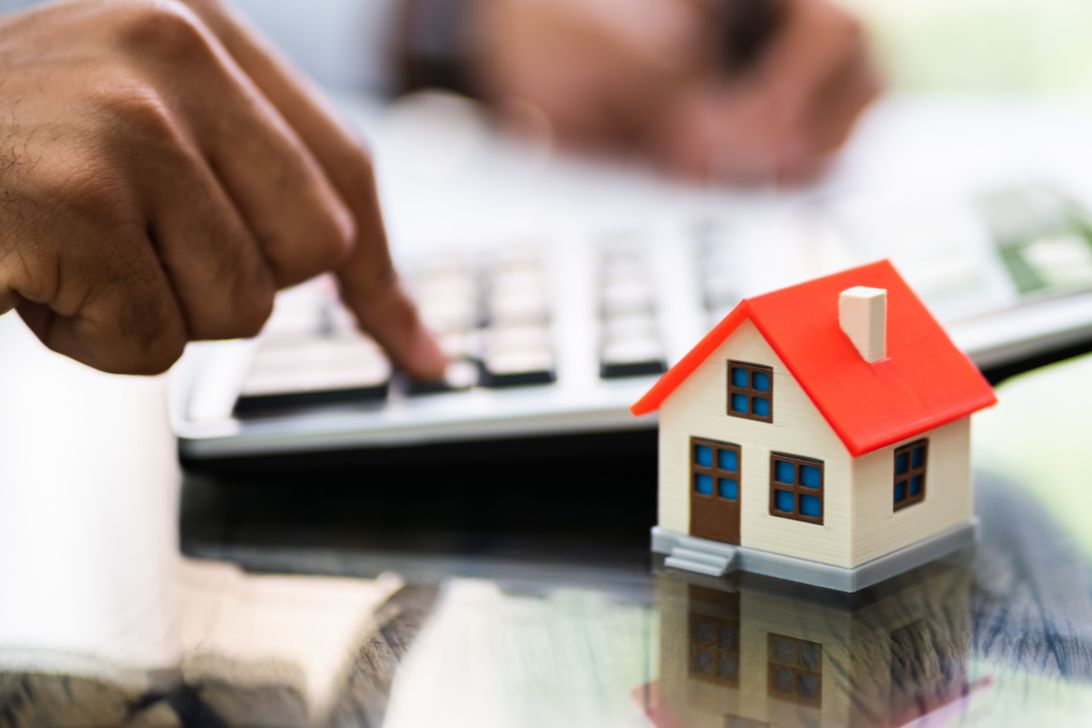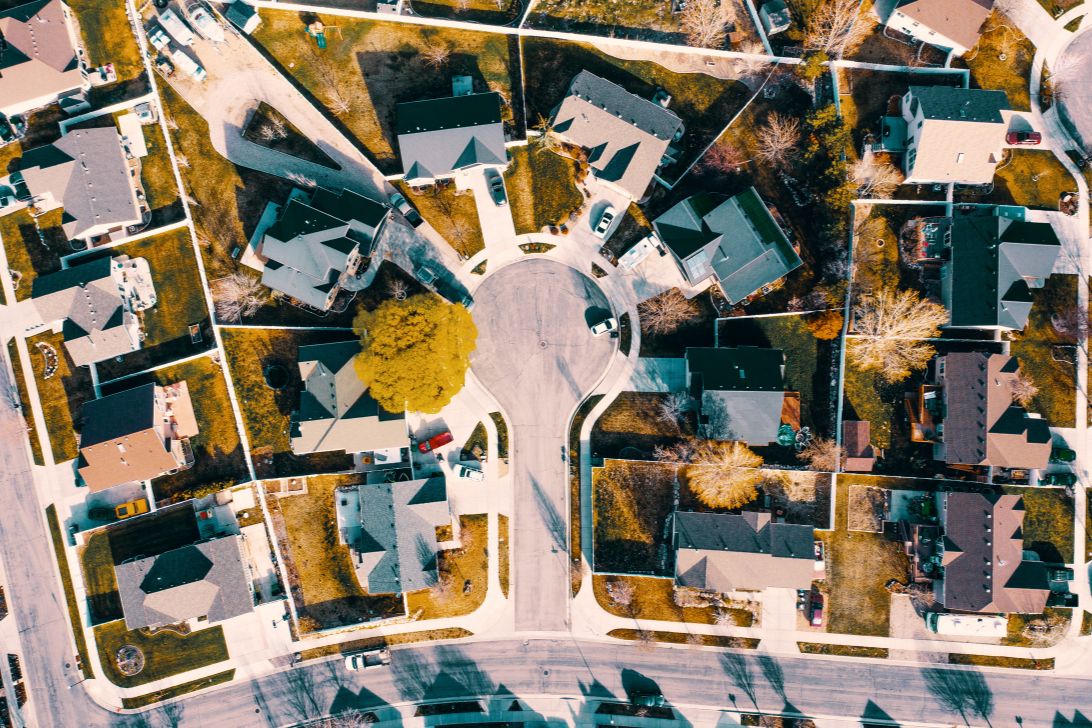How Many Square Feet Is My House? How To Calculate The Square Footage Of A House?
If you need to know how to measure the square footage of a house, you have come to the right place. This post is a beginner’s guide to measuring the square feet in your home. I’ll help by telling you what tools you need, how to measure, and how to add it all up so you’ll know how to find sq ft.
Also, I have information about what finished vs. unfinished square feet, and the ANSI appraisal method of calculating square feet and how that will affect GLA (gross living area) calculations. So, let’s get started!
Square Footage Statistics

Before we get started with measuring square feet have you ever wondered what’s a lot or what’s too small or how much a home sells for per square foot? I have, so let me share some of those with you.
- The median square footage area of a home in the U.S. is 2,261.
- The house measurement of the typical home in the U.S. has nearly doubled since 1960 and more than doubled since 1950.
- The average price per square foot of a home in the U.S. is $244. The median price per square foot is $200.
- Did you know real estate agents and appraisers do not value homes strictly on a price per square foot basis? Instead, many factors about the home are considered to find a home fair market value.
What Is Considered a Home’s Square Footage?

There are many misconceptions about measuring square footage. What counts? What doesn’t? And, is it all equal in value? Let’s get into all of that right here.
What Is Included in the Square Footage of a House?
The widely accepted rule is that all finished square footage should be counted when marketing a home for sale. Finished square footage meets certain criteria.
Typically, finished square foot includes any space with wall coverings, a ceiling, and a floor. This means you can not see the skeleton, or house framing, at any of those surfaces because it is covered with some other material. This would include hallways, bathrooms, closets, and any finished room in your home.
Finished square footage is climate controlled, too. Think about heat because there are still homes that lack air conditioning. Climate control of a room combined with wall, floor, and ceiling coverings makes a space finished. Therefore, a climate controlled four seasons room should be counted in the finished square feet of the home.
Does square footage include the garage? No, it does not. A garage should never be included in square footage measurements. Garages are not a part of the square footage calculation when measuring the square footage of a home.
Basements are sometimes included in square footage. It depends on whether or not the space is finished. Also, some home designs are treated differently regarding whether or not the basement is a basement or a lower level.
But, to summarize this section, the following should be included when counting square footage:
- Bedrooms
- Bathrooms
- Closets
- Hallways
- Stairwells
- Kitchens
- Climate controlled four seasons rooms
- Finished laundry room
These areas should not be included when counting square footage of a house:
- Garages
- Outdoor living areas
- Pool areas
Lastly, sometimes basements are included in square footage calculations.
Finished vs. Unfinished Square Footage

Finished square footage counts towards the total square footage of a home. Finished square footage has several characteristics. These include that all of the walls have a covering like drywall, plaster, or panels. Next, the ceiling is covered with a drop ceiling or drywall and the floor has a flooring element like carpet, tile, or vinyl plank. Lastly, the area is heated.
Unfinished square footage is square footage missing one of the characteristics of finished square feet. Typically, unfinished square footage is found in a basement. However, I have seen Cape Cod style homes with unfinished upper floors or other homes with an unfinished space above ground.
Above Grade Square Footage vs. Below Grade Square Footage
Above grade square footage is square footage above the gradient line. The gradient line is where the earth meets the home. Square footage on the main floor and all floors above will almost always be above grade. This only gets a little tricky when the home is a bi-level, tri-level, quad-level, or hillside ranch.
These home models may have a basement, but the lowest level may be called the lower level. This happens because a level of the home is partly under the gradient line but also partly above it. Most areas consider a level like this to be the lower level and mark it as above grade square footage. Check with your local municipality, contractor, or a real estate agent for a certain answer to this question.
Why Measure Square Footage?

The square footage of a home is an important factor when determining a home’s value. First, you want to be able to accurately advertise your home. Secondly, square footage helps justify the price of your home. When getting a property value estimation you want to know how much house you actually own.
Knowing the square footage of your home is also important when making improvements to the home. When you know the square footage of your home and the individual rooms in your home you will know how much material you need to buy to complete a project.
Lastly, knowing the square footage of your home is important because it can help you with a property tax assessment. Many municipalities use a square footage equation to assess your home’s value. Knowing the correct square footage of your home can help you when appealing the assessed value.
How To Find Square Feet For Your House in 3 Steps

Here, I will tell you how to calculate square footage of your home. Finding the square footage of your home is not too difficult. Here, I will help you break it up into easy parts with some easy math to help with the feet and inches. First, you need your tools. The tools needed to measure your square footage include:
- Paper
- Pencil
- Measuring tape or a laser measuring tool
Step 1: Sketch and Divide Each Room into Shapes
Make a sketch for each room in your home. Focus on the outer perimeter walls, too. Also, do not forget about all of the closets. Closets count in your square footage.
You aren’t trying to win an art contest. Just capture the basic shape of each room. Think of standing above the room and looking down. This will help you make the outline of the room. It can be useful to use one piece of paper for each room, too.
Step 2: Measure the Room to Calculate Square Footage
The square feet formula is length times width. Measure the room by measuring the length and width of each area of each room or each space in each room.
Most rooms are square or rectangular in shape. Break up the spaces in each room to a square or rectangle whenever possible.
Write down the length and width measurement for every area you measure. Write down all of your measurements in inches. Ignore the feet designations on the measuring tape and only look at the inches.
Step 3: Convert Inches to Feet and Calculate Square Footage
If you followed my advice for measuring the square footage of your home by writing all of the measurements in the total number of inches this conversion will be really easy.
- First, multiply the length and width of each space you measured in a room. This should include the room itself, any bump-out, and closets.
- Once you multiply the length by the width in inches of each space, divide that by 12. This will give the square feet of that space as a whole with a decimal remainder.
- Now, add together all of the measured spaces in the room. This will now give the total square footage of that room. Continue the process room by room.
- Then, add the totals of all the rooms to get the square footage of your home.
How to Calculate Square Footage of a House for Appraisal

Appraisers have their own ways of measuring a house. The square footage formula used by an appraiser depends on which method of measurement for appraisal the appraiser is using. This can be directed based on the loan type.
For example, in late 2021 Fannie Mae stated it has adopted the ANSI measuring standard for measuring gross living square footage (GLA). Your actual square footage calculations and measurements as well as what is on record with your assessor may be different from what is found using the ANSI method of measuring square footage.
Here are the ANSI factors most likely to affect your home’s square footage measurements:
- Finished staircases will count as finished square footage and will be added to the level from which the staircase descends.
- Any space partially or fully below grade shall be reported as basement square footage. This can have a meaningful impact on the valuation of split level homes including bi-level, tri-level, and quad-level homes.
- Open areas above, such as a two-story foyer, can not count the upper area in finished square footage.
- All finished areas in the gross living area (GLA) must have a ceiling height of at least seven feet. This will affect owners of homes with pitched ceilings in a room. This is common in older homes with converted attics, Cape Cod style homes, and many modern homes with a bonus room over a garage.
Fannie Mae’s adoption means that this standard will be used for government backed loans. This is a meaningful amount of loans. Additionally, buyers of mortgages typically over time adopt rules that have been adopted by the federal government. Therefore, with time the ANSI appraisal measurement method will become the norm.
Considering Square Footage When Buying a Property

Overall, your first consideration about square footage should be whether or not the space is a good fit for you. The next concern should be does the home appear to actually have the amount of square footage stated in the advertisement. Here is a method for estimating square footage.
Homebuyers can estimate square footage by measuring the outer perimeter of the home. Note which levels were entirely complete. Then, measure the outer perimeter of the home minus the garage.
Lastly, a common mistake by some homebuyers is strictly following a price per square foot when determining a home’s value. The price per square foot is a guide, but it is not the end-all, be-all of home valuation. Many factors affect a home’s value beyond its square footage.
Tips For Determining Square Footage

There are some tips you could follow to make measuring the square footage of your home easier.
- Push furniture to the middle of the room to make it easier to measure at the walls
- Measure at the floor
- Use a reel measuring tape. They are longer and easier to use.
- Think in terms of squares and rectangles. For example, measure the square of a bedroom. Then, measure the closet.
Conclusion
Knowing how to calculate square feet of houses is beneficial to you. Knowing how to do this will help you when it comes time to sell your home, plan for projects, and appeal a property tax assessment.
All interior parts of your home are included so long as there is a floor you can walk on. Parts of your home that do not count are garages, unenclosed outdoor areas, accessory structures, crawl spaces, or unfinished attics. Make sure to classify each portion of square footage as finished or unfinished, too.
You can find the square footage of a house by measuring each room. Think in squares and rectangles to make measuring easier. There is nothing wrong with measuring a living room with a bump out as two pieces to make it easier. Figuring square feet is easier with some basic tools you likely already have, too. Now, you are ready to find the square footage of your home.
FAQ
How many square feet are in the average house?
The average house in the U.S. has 2,261 square feet. U.S. home sizes have grown significantly over the last 60 years. Homes in the 1960s typically had just 1,200 finished square feet.
What is the house total area vs. living area?
A home’s total area includes the entire footprint of the home measured from the exterior walls. The living area often called the GLA (gross living area) is the total amount of space considered as finished square feet.
What is considered livable square footage?
Livable square footage is finished and has heating. Finished square footage has a wall covering on all walls, a ceiling covering, and a floor covering. The space also should be heated, too.
What is the American National Standards Institute (ANSI) method for measuring square footage?
The American National Standards Institute (ANSI) method of measuring square footage is designed to standardize square footage measurement of homes during the appraisal process. This will help alleviate the uncertainty of questionable areas by giving clearer distinctions between what is counted as gross living area and what is not.
The Quadwalls Team of Real Estate Agents in Northwest Indiana
About Quadwalls.com
Quadwalls.com is a real estate website founded in Valparaiso, IN dedicated to helping home buyers and sellers make better decisions when buying and selling real estate.
How Quadwalls Helps Homebuyers
The Quadwalls Real Estate Team has some of the best real estate agents in Northwest Indiana. Let us help you get started. Take the first step and tell us more about what you need in a home. You can easily do this online by clicking here and completing your Quadwalls HomeFinder Assistant Today!
How Quadwalls Helps Home Sellers
The Quadwalls Real Estate Team can help you sell your home in Indiana. We offer a full-feature listing service and low, low, low real estate commission fees. Click here to learn all about our services and fees. Or, you can get your free Quadwalls Home E-Valuation. An actual Indiana real estate agent will review your answers and do research to get you an accurate and reliable home value.
 Updated: March 29, 2023
Updated: March 29, 2023  9242
9242  14 min
14 min











